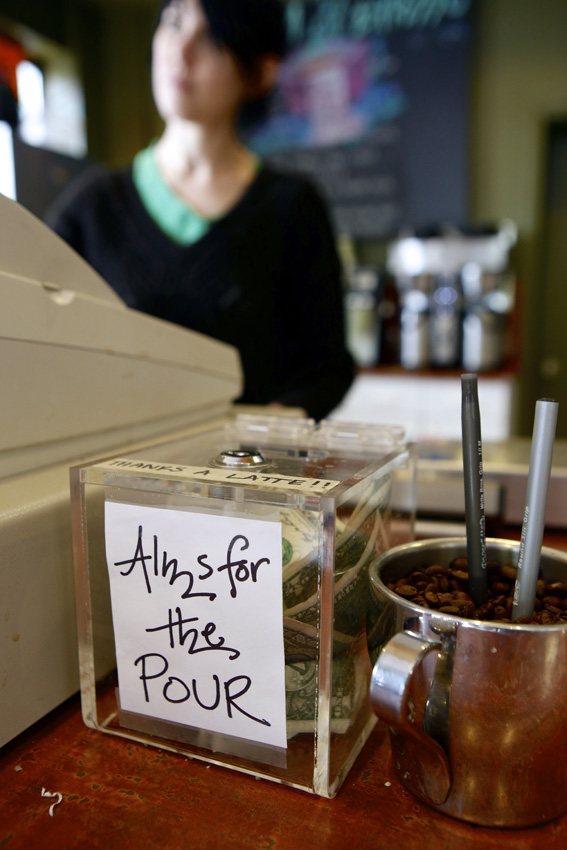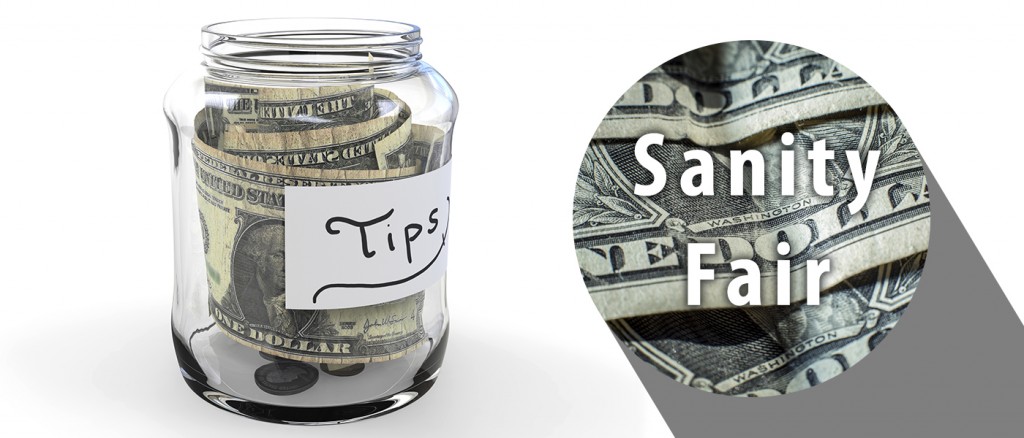The begging jars are everywhere. You can’t order a cup of coffee, an ice cream cone or a sandwich without seeing a tip jar, usually colorfully decorated, adorned with clever phrases all designed to cajole me to part with some change. “Alms for the pour,” seen at Freedom of Espresso in Armory Square, is my most recent favorite.
My problem is, I can’t part with change.
I have a mild, undiagnosed and untreated form of OCD which makes it impossible for me to spend coins. Unlike most people waiting in line who gladly fish through their pockets to find the coins to round up their purchase so they can get only bills back, I quietly rejoice when I purchase something for, say, $2.09. I go home and place that 91 cents, plus whatever other coins have accumulated in my pocket during the day, in a jar on my dresser.
So if I’m going to leave a tip for a barrista, it’s got to be a dollar bill. As crazy as it sounds, I’d rather leave a dollar than a quarter.

Michael Davis Photo | Syracuse New Times
But that’s a glitch in my own brain circuitry, not really the core of what bugs me about this ubiquitous and accepted form of institutionalized panhandling. What discomforts me is the begging.
People working for a living shouldn’t have to be prostrating themselves before strangers in order to make ends meet. Would it not be more dignified, and more honest, if we just paid a fair price for the coffee (it’s already more than two bucks) and let the coffee shop owner pay the person behind the counter a fair wage?
Not all that long ago, the line was pretty clear. If you’re sitting down, at a restaurant table or on a barstool, you’re expected to leave a tip. If you’re standing up at a counter, you’re not.
Now at the risk of offending every barrista and sandwich artist I’ve ever met, there is a huge difference between standing behind a counter and running around a dining room waiting on tables. Taking and remembering food and drink orders for a table full of hungry diners working their way from drinks through appetizers through dinner and dessert is a far cry, mentally and physically, from pouring a cup of coffee or scooping an ice cream cone.
The law reflects this state of affairs by means of a two-tiered minimum wage. The federal government establishes a paltry minimum wage of $2.13 per hour for workers who receive $30 or more per month in tips. No one can live on $2.13 an hour: That’s more than $5 less than the minimum wage for everyone else, which is still mired at $7.25.
So we all understand that we have to tip waiters and waitresses. But the tip jar sitting in front of workers making the regular minimum, that’s a different story.
In New York state, waiters and waitresses earning tips have to be paid at least $5 per hour, compared to the state minimum for non-tipped workers, which is $8.75. That will change at the end of this year, when the tipped minimum goes up to $7.50, and the rest of the minimum wage labor force gets only a quarter raise to $9. Los Angeles is among cities that plan to adopt a $15 minimum within five years, tips or no tips.
Labor activists are pushing for that same number in New York. Gov. Andrew Cuomo made headlines in May when he asked his newly created wage board to consider a special higher minimum for fast-food workers, without giving a specific number. Cuomo, striking a rare populist note, argued that it was time for the government to stop subsidizing the hamburger industry.
One thing’s for sure: You never see that tip jar out at McDonald’s.




